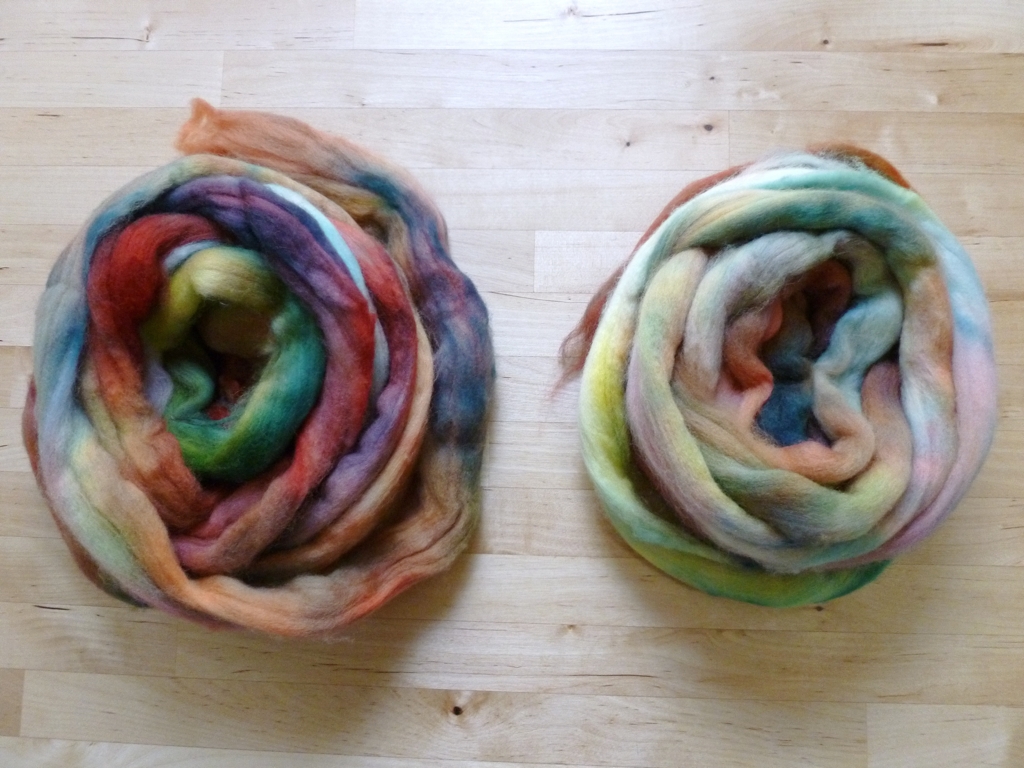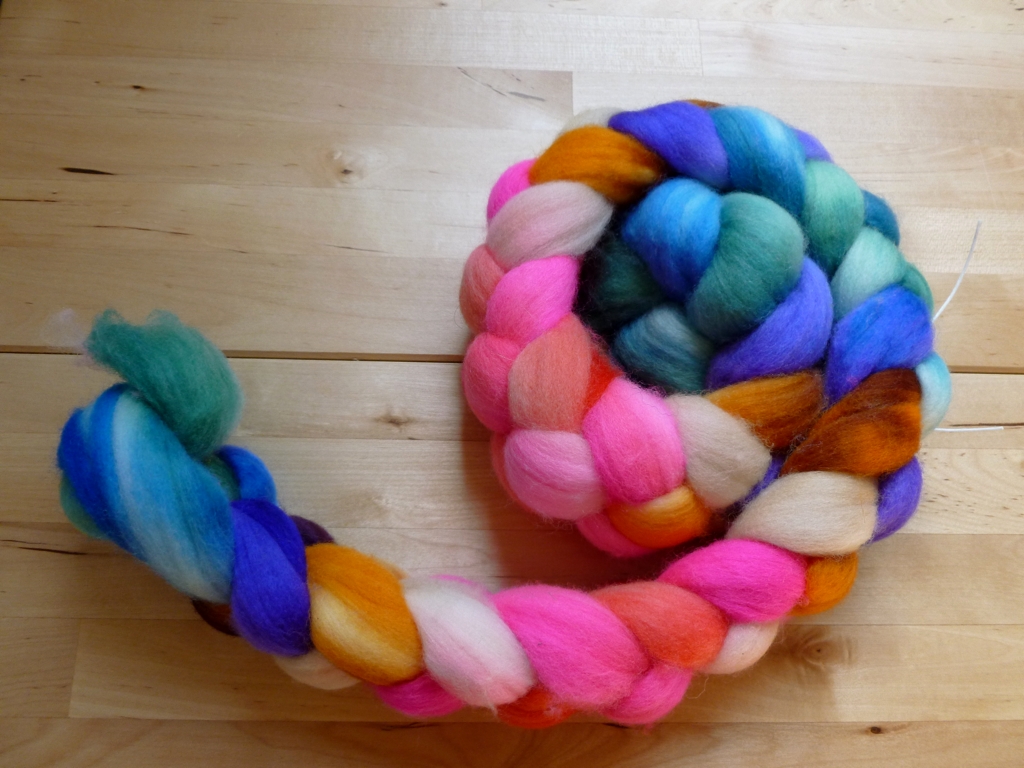Tour de Fleece 2014 Recap
/I knew it was going to be a photo finish. There were only 6 days remaining of Tour de Fleece and I still had ounces left to spin. Color Bot was starting to fill up a bobbin but I still hadn’t drafted my way through the first of 4 color repeats. If everything went just right, I’d be able to finish the first single Thursday. On Saturday, I’d haul the wheel to the spinning guild meeting and finish the second single. Sunday, the last day, I would ply. It was going to be tight but I could pull it off unless there were some major hiccups. Instead of hiccup, it was twinge in my shoulder that moved down to my elbow and finally to my wrist. Didn’t take long for my left wrist and hand to swell up and hurt to move. I was officially out of the race.
How did I do this to myself? Well, yoga’s downward dogs and planks didn’t help but the main culprit is how I spin. No matter how I draft, long-draw or otherwise, I usually end up twisted to the left with my arm sticking straight out behind me. Knew this wasn’t the most ergonomic posture and it finally came back to bite me. So, until my arms heals up, no spinning and no yoga.
Not spinning for the past few days, especially the last of the Tour, has been annoying and the knitting has been scant; however, my shoulder and arm are all the better for it. Wrist braces don’t exactly make that stuff easy anyhow. The swelling has gone down and everything hurts much less now. At least I was able to reach the majority of my Tour de Fleece goals before my arm called it quits. I spun a few of the batts I made on the drum carder. I tried new a new technique for spinning fine singles and it actually worked. Not being able to spin gave me the time to read about spinning, specifically spinning ergonomics. FYI, the articles in Ply have been especially helpful. Didn’t get around to spinning new fibers but nothing’s stopping me from trying once my arm heals.
Aside from messing up my arm and shoulder, this year’s Tour de Fleece was a good one. I learned and tried new things, had fun, and got some great handspun out of it. Keeping a relaxed pace was nice too and not spinning every day probably saved me some pain and stress in the long run. Not including Color Bot, I spun 3.2 oz (90g) into 4 skeins and 206 yds. Not much but still worthwhile.
How did your Tour go for you? Injury free, I hope.




































































































